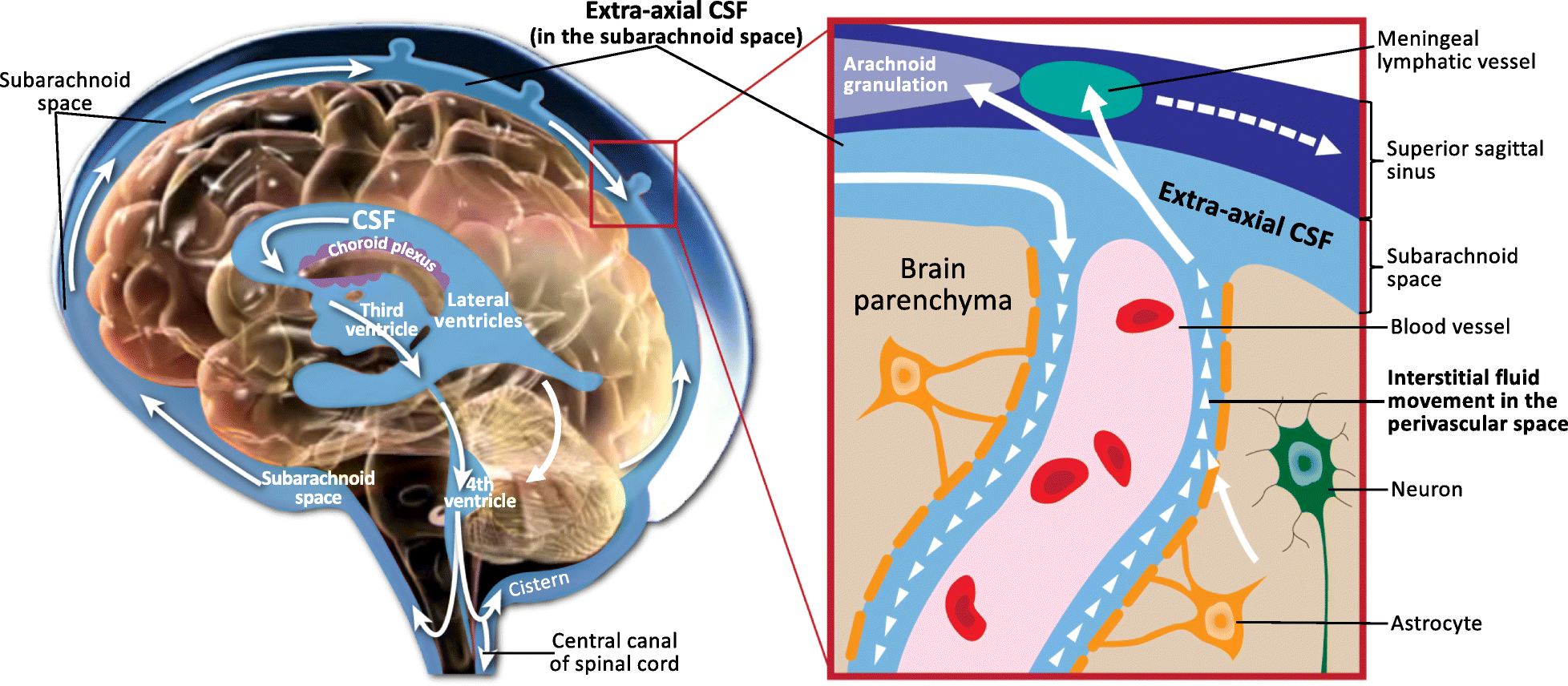Foramen Of Magendie on:
[Wikipedia]
[Google]
[Amazon]
The median aperture (median aperture of fourth ventricle or foramen of Magendie) is an opening at the caudal portion of the roof of the fourth ventricle. It allows the flow of

File:Slide3qq.JPG, Median aperture
cerebrospinal fluid
Cerebrospinal fluid (CSF) is a clear, colorless Extracellular fluid#Transcellular fluid, transcellular body fluid found within the meninges, meningeal tissue that surrounds the vertebrate brain and spinal cord, and in the ventricular system, ven ...
(CSF) from the fourth ventricle
The fourth ventricle is one of the four connected fluid-filled cavities within the human brain. These cavities, known collectively as the ventricular system, consist of the left and right lateral ventricles, the third ventricle, and the fourth ...
into the cisterna magna
The cisterna magna (posterior cerebellomedullary cistern, or cerebellomedullary cistern) is the largest of the subarachnoid cisterns. It occupies the space created by the angle between the caudal/inferior surface of the cerebellum, and the dorsa ...
. The other openings of the fourth ventricle are the lateral aperture
The lateral aperture, lateral aperture of fourth ventricle or foramen of Luschka (after anatomist Hubert von Luschka)Hube ...
s - one on either side. The median aperture varies in size but accounts for most of the outflow of CSF from the fourth ventricle.
Structure
Relations
The median foramen on axial images is posterior to thepons
The pons (from Latin , "bridge") is part of the brainstem that in humans and other mammals, lies inferior to the midbrain, superior to the medulla oblongata and anterior to the cerebellum.
The pons is also called the pons Varolii ("bridge of ...
and anterior to the caudal cerebellum
The cerebellum (: cerebella or cerebellums; Latin for 'little brain') is a major feature of the hindbrain of all vertebrates. Although usually smaller than the cerebrum, in some animals such as the mormyrid fishes it may be as large as it or eve ...
. It is surrounded by the obex
The obex () is the point in the human brain at which the fourth ventricle narrows to become the central canal of the spinal cord. Cerebrospinal fluid can flow from the fourth ventricle into the obex. In anatomical studies, the obex has been fo ...
and gracile tubercles of the medulla, tela choroidea
The tela choroidea (or tela chorioidea) is a region of meninges, meningeal pia mater that adheres to the underlying ependyma, and gives rise to the choroid plexus in each of the brain’s Ventricular system, four ventricles. ''Tela'' is Latin for ...
of the fourth ventricle
The fourth ventricle is one of the four connected fluid-filled cavities within the human brain. These cavities, known collectively as the ventricular system, consist of the left and right lateral ventricles, the third ventricle, and the fourth ...
and its choroid plexus
The choroid plexus, or plica choroidea, is a plexus of cells that arises from the tela choroidea in each of the ventricles of the brain. Regions of the choroid plexus produce and secrete most of the cerebrospinal fluid (CSF) of the central ...
, which is attached to the cerebellar vermis
The cerebellar vermis (from Latin ''vermis,'' "worm") is located in the medial, cortico-nuclear zone of the cerebellum, which is in the posterior cranial fossa, posterior fossa of the cranium. The primary fissure in the vermis curves ventrolatera ...
.
Eponym
The foramen of Magendie is named forFrançois Magendie
__NOTOC__
François Magendie (6 October 1783 – 7 October 1855) was a French physiologist, considered a pioneer of experimental physiology. He is known for describing the foramen of Magendie. There is also a ''Magendie sign'', a downward ...
, who first described it. The term "foramen of Magendie" is commonly used, and this opening is frequently described and illustrated as a foramen in the inferior roof of the fourth ventricle. However, the opening is an aperture, rather than a foramen.

Additional images
References
{{Authority control Ventricular system